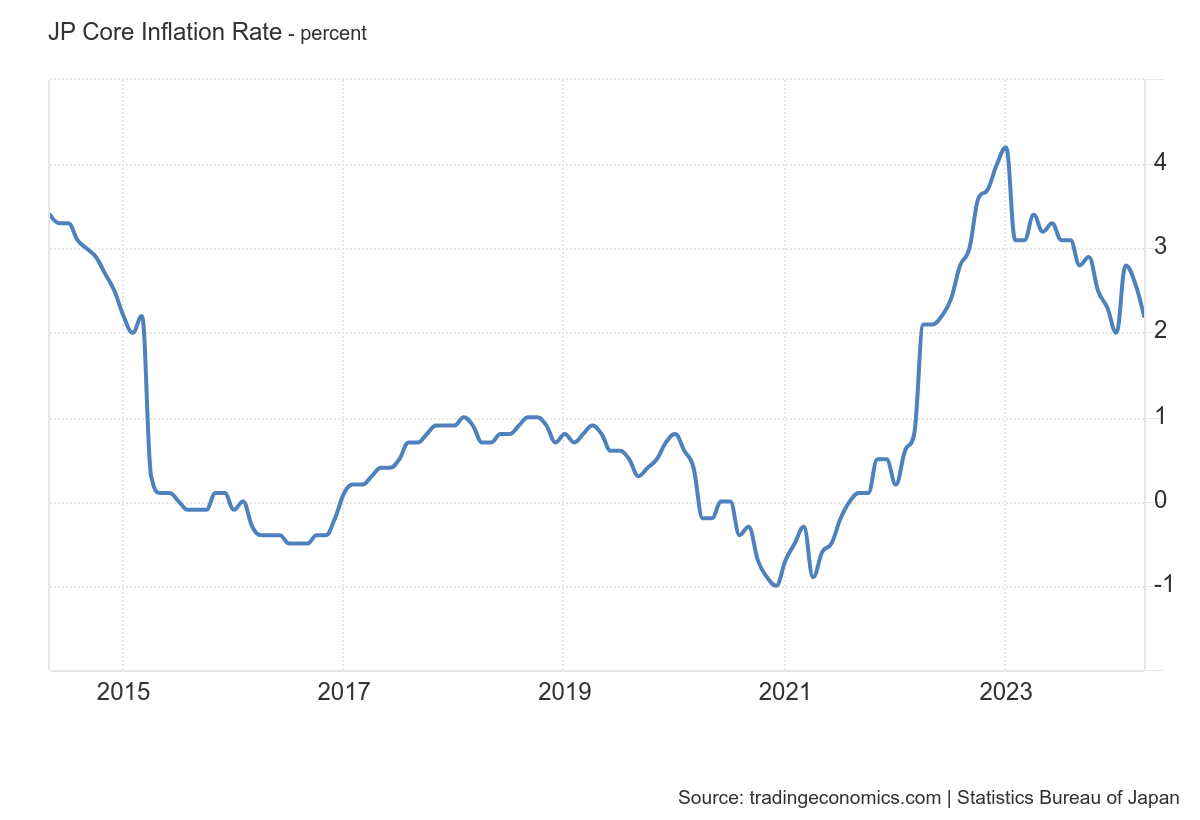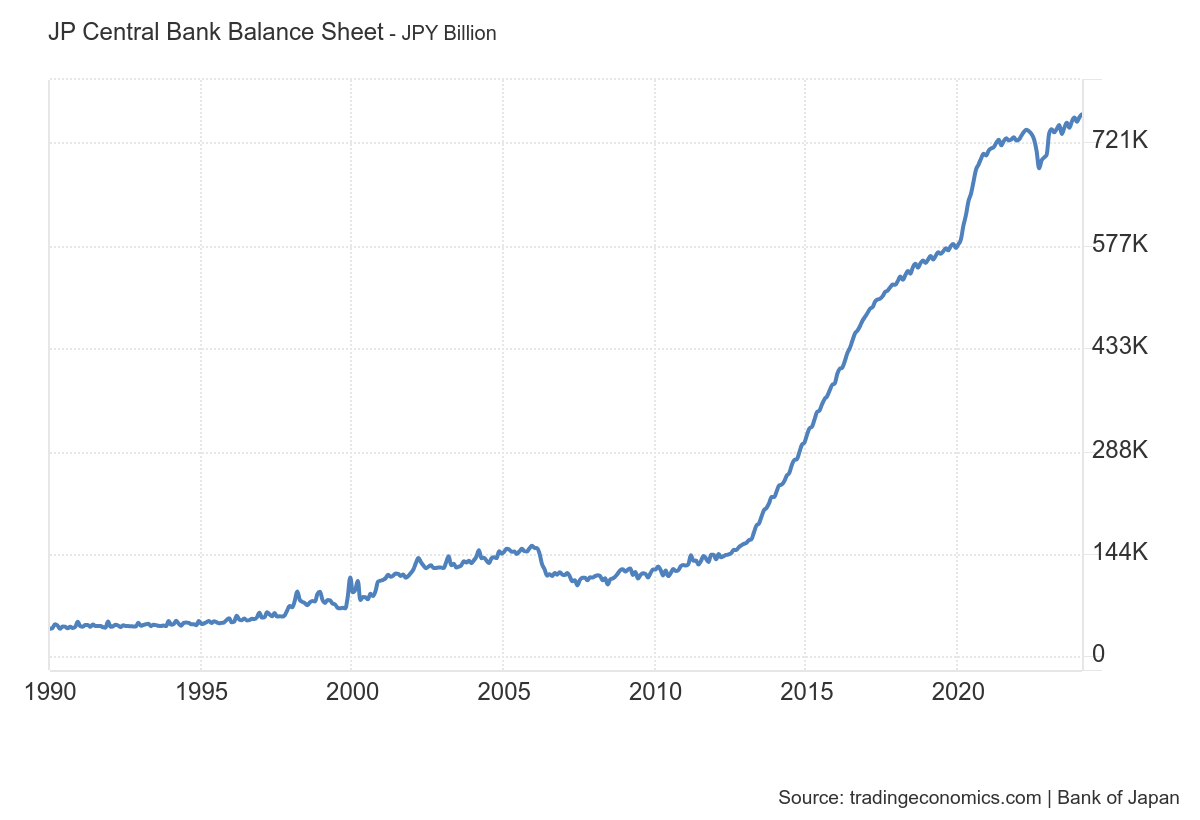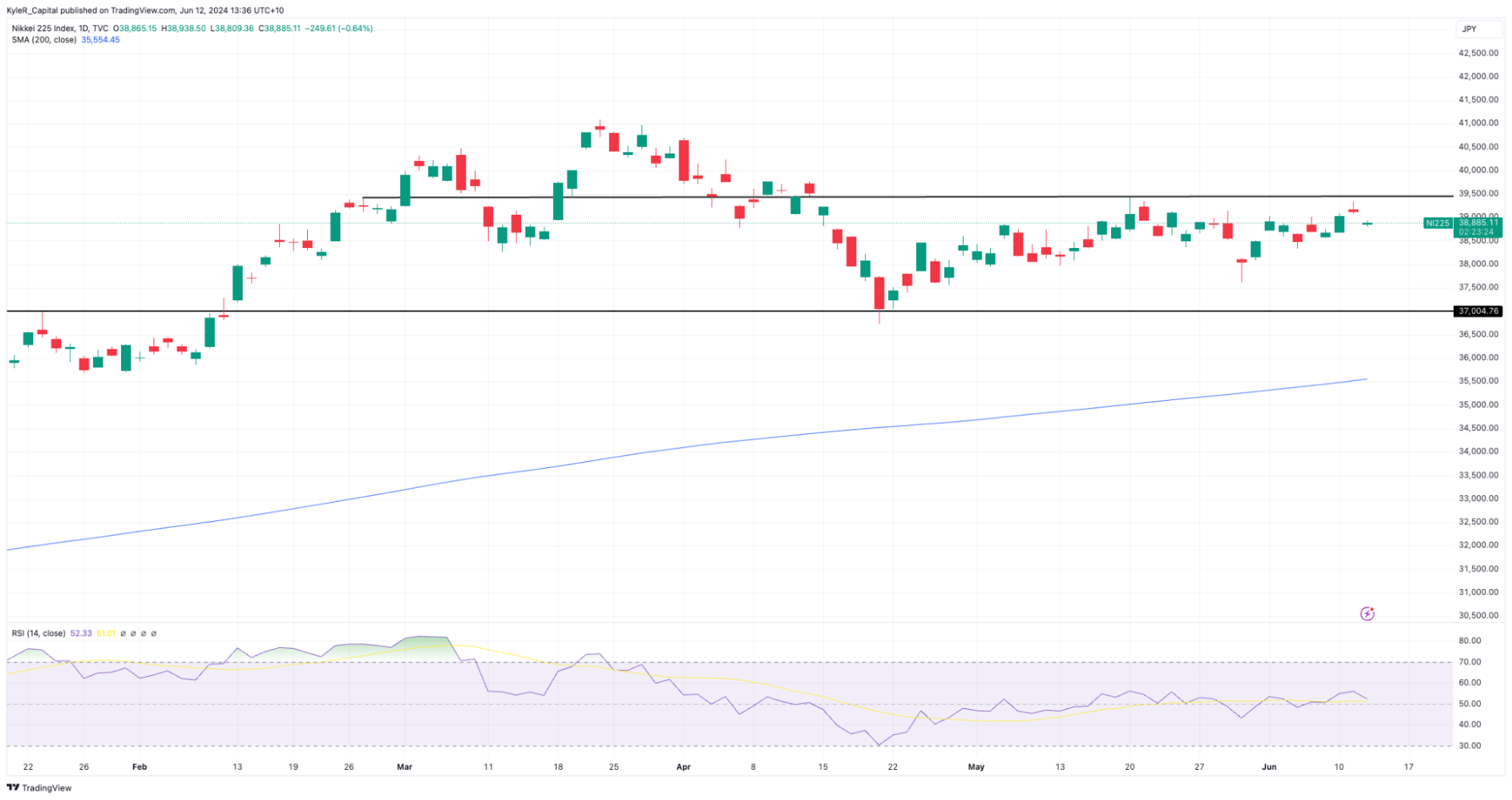Bank of Japan Preview: Markets look for guidance from BOJ about timing of next hike
The Bank of Japan meets on Friday, 14th of June, 2024. We preview what to expect from the BOJ decision and how it might impact the USD/JPY and Nikkei 225.
The Bank of Japan meets on Friday, 14th of June, 2024. We preview what to expect from the BOJ decision and how it might impact the USD/JPY and Nikkei 225.
Will the BOJ set the stage for a July hike?
Swaps markets suggest that the Bank of Japan will keep policy unchanged at this meeting. However, the curve continues to indicate further hikes from the central bank this year, with a greater than 80% hike implied for the July meeting, with two hikes fully baked-in for 2024. As a result, the markets are positioning for guidance from the BOJ about when it expects to hike next, with the balance of probabilities suggesting it will happen at the next meeting.

(Source: Bloomberg)
Expectations for future policy tightening come despite mixed economic data in Japan. Growth is slowing down, with GDP contracting 0.5% in the first quarter. Core CPI is also trending lower, although remains a fraction above the BOJ’s 2% target. Despite the fundamentals, the recent commentary suggests that higher wage growth, as well as a jump in wages from recent “shunto” negotiations, has the central bank confident that a virtuous wage/price cycle will anchor inflation above 2%.

(Source: Trading Economics)
Although it won’t admit it explicitly, partly because it’s the mandated responsibility of the country’s Ministry of Finance, the Bank of Japan remains wary of the influence monetary policy is having on a weaker exchange rate and the knock-on impacts that has on inflation. As a result, the BOJ may be more inclined to prepare the markets for tighter policy going forward.
The BOJ could begin process of tapering quantitative easing
There’s also a high chance that the Bank of Japan will flag are reduction in the size of its asset purchases at this meeting. Reports have circulated in the markets of meetings between monetary and fiscal authorities about the central bank reducing the size of its bond holdings, especially how that may impact government spending and interest repayments. Given higher global bond yields and the upward pressure that is putting on long-term rates, along with a desire to tighten financial conditions to adequately manage inflation risks and lean against a depreciating currency, the fundamentals are in place for the Bank of Japan to commence quantitative tightening. According to a Bloomberg survey, a majority of economists expect the Bank of Japan to reduce bond purchases, slowing them to ¥6 trillion per month.

(Source: Bloomberg, Capital.com)
(Past performance is not a reliable indicator of future results)
Technical analysis: USD/JPY and Nikkei 225
Given a July hike from the Bank of Japan isn’t fully priced-in, guidance from the central bank that it could move at it its next meeting could put upward pressure on the Yen and downward pressure on the Nikkei. That dynamic would be compounded if the BOJ confirms a reduction in bond buying. Conversely, a more neutral tone about the policy outlook could lead to an unwinding of rate hike expectations; however, that outcome is unlikely, given the central bank’s concerns about inflation and a weaker Yen.
The USD/JPY remains in an uptrend, despite policymakers attempts to jawbone the Yen and intervene in the market. Rallies continue to be faded above 158, while 152 has proven to be a significant level of support/resistance. A short-term higher-low at 155 could be another critical level to watch.

(Source: Trading View)
(Past performance is not a reliable indicator of future results)
The Nikkei is trending sideways (despite the weaker Yen) as policy uncertainty and higher JGB yields put pressure on valuations. Technical resistance appears to be around 39,400 and marks the top of the markets recent short-range. Meanwhile, significant technical support appears to be around 37,000.

(Source: Trading View)
(Past performance is not a reliable indicator of future results)